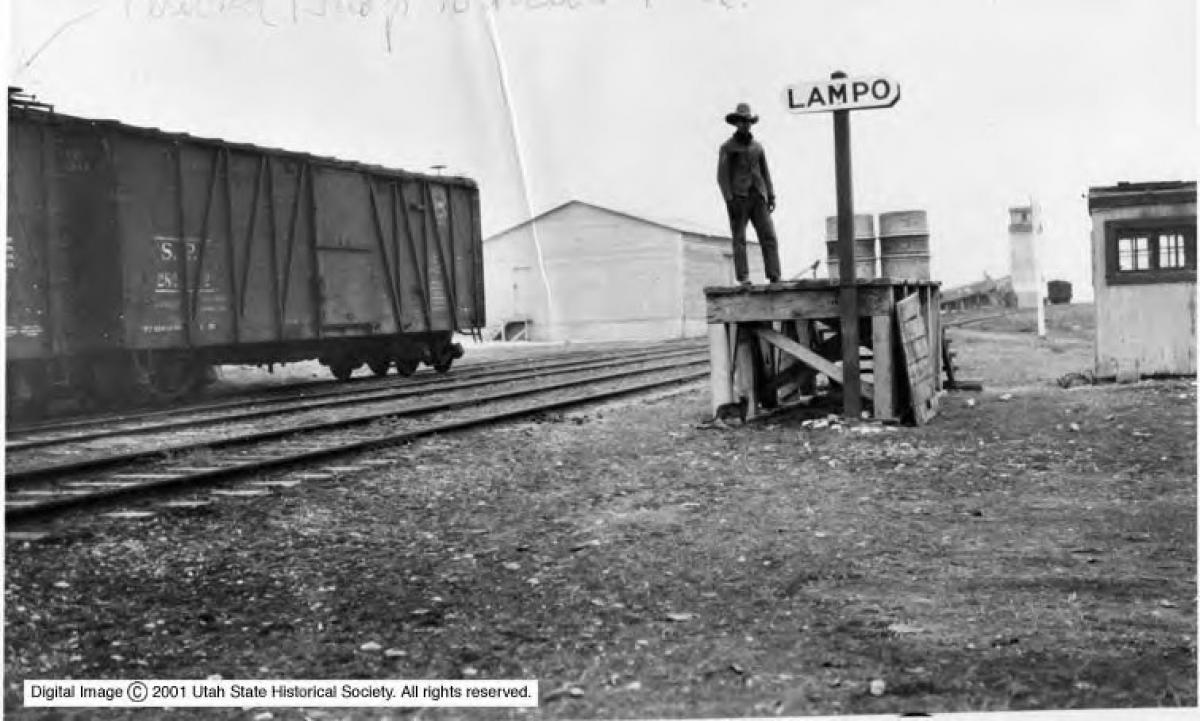Lampo

In the late 1800s, Lampo, Utah, also known as Kolmar or Junction City, was the westernmost camp established by the Union Pacific Railroad (UP) during the construction of the transcontinental railroad. The Chinese immigrants, working for the Central Pacific, built the roadbed leading to Lampo, which was surrounded by grading camps. The town boasted a dance hall and several saloons, making it the liveliest camp according to a Deseret News newspaper article from March 28, 1869.
Located in a valley near where the grade began the ascent of Promontory, Lampo was completely surrounded by grading camps. To reach it, one would have to leave the Blue Creek Junction where the water tower was located and head north towards where the tracks made a large U-shaped bend, then start the climb upward towards Promontory Summit. Roughly two-thirds of the way up, there was a natural rock arch formation named in honor of the 10,000 Chinese workers who had helped build the railroad.
In 1892 or 1893, Lampo was primarily cattle country, and there were no farms in sight for miles due to the Promontory Land & Livestock Company owning the land from Promontory Point to southern Idaho and west to the Nevada border. In November 1908, Christian Olsen Sr., Wilford and Carl Olsen, and William Korth became the first farmers in Lampo. During their deer hunting trip, they slept in the old Boxcar Depot at Promontory and marveled at the surrounding country. Christian recounted how, before the railroad was completed, he remembered the country being full of tall grass and a shortage of wood to make fires. During that winter, he met a man who wanted to sell his land, and Christian bought 200 acres west of the Lampo Station. In the spring of 1909, railing and plowing began, and the first crop was planted. The Olsens were allotted 2 gallons of water per minute from Engineer Springs on the mountain to the west and had to have the water running on their property by a certain date. More than once, they had to clean out their pipe that had been plugged by cattle so that the cattlemen could fill the water troughs for their cattle.
A few years later, Lampo became a bustling shipping and receiving station with two large wooden elevators, scales, a storage building, and a platform. People lived in two old railroad cars that were built together end-to-end, as well as the "little house out back." Grain from surrounding farms was brought to Lampo, loaded into boxcars, and shipped to mills. The station was also a rest stop for travelers heading northward or southward to farms and homes, offering cold and sweet water for horses and travelers.
Lampo held July 4th celebrations with rodeos, cowboys, and freshly killed beef for all to enjoy. The cowboys were the area ranch hands and farmers who enjoyed a good ride.
Sadly, all that remains of Lampo's railroad station today are cement foundations, part of one of the large wooden elevators, and the trunk of one of the large trees. Nevertheless, vivid memories of Lampo's heyday as a bustling shipping and receiving station linger in the hearts and minds of those who have witnessed the many developments and changes in time, which helped the area become a productive and prosperous part of the county and state.
